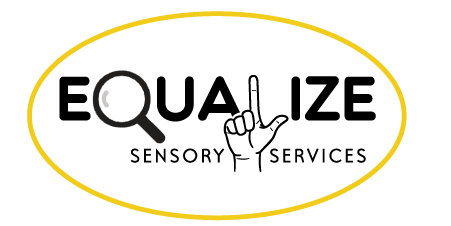by Jillian Morency, Teacher of the Deaf, Equalize Sensory Services
As busy teachers, I think we all know the feeling of being overwhelmed! It is so important for us to know our limits, voice our concerns and set appropriate boundaries in all areas of our lives. However, this isn’t always easy. We want to fit in and appear “on-top of” everything that comes our way! Also, we don’t want to add to the stress of our colleagues and supervisors by asking for extra help.
Now imagine how our students with hearing loss feel when they start to fall behind during a lesson. Students of all ages may be hesitant to interrupt or draw attention to themselves and hear the moans and groans of classmates when information needs to be repeated. They may not want to feel singled-out by frequent check-ins from the teacher, or to feel “less than” by bringing up a “silly question.” Additionally, they often may not have the prerequisite communication skills, self-concept and life experience necessary to understand that it is both their right and their responsibility to access the same information as their peers.
So, how can we encourage self-determination and self-advocacy in our dynamic and fast-paced classrooms? How can we foster an environment of acceptance where all students are comfortable asking for and receiving clarification, repetition and any additional support that they might need?
Well, the good news is that with some small modifications improving self-advocacy skills won’t be just another thing to add to the list of teacher responsibilities. It can fit seamlessly into our daily routines and classroom culture!
Here are just a few examples of ways to encourage self-advocacy for our deaf and hard-of-hearing students in the mainstream, and many of these will also benefit their typically hearing peers along the way!
Implement a non-verbal check in signal. This may be as simple as a two-sided flash card with one green side to signify “I get it” and one red side to represent “I need more information”.
- Suggest that before a student asks for extra help from a teacher on a written excerpt, for example, he or she should highlight or underline unfamiliar words and/or concepts in the passage. This will both give you a “jumping off point” to facilitate the communication of where the breakdown in understanding occurred and illustrate just how much content is unfamiliar and how much scaffolding the students may need for this assignment.
- Encourage ALL students to ask questions. Consider having rewards available for the most thought-provoking question.
- Consider a peer check-in system by pairing students who experience comprehension challenges with a student nearby who is able to clarify information quickly such as “did she say page 182?”
- Normalize asking for clarification, written notes, re-phrasing and repetition. These are beneficial to all students.
- Consider contacting a Teacher of the Deaf and Hard-of-Hearing through Equalize Sensory Services who can work 1:1 with hearing impaired students to evaluate the student’s self-concept and self-advocacy skills and help the student identify key areas that they can improve in order to become more self-reliant and confident in advocating for themselves.
Have other ideas for encouraging self-advocacy? We’d love to hear from you! Send an email to kim@equalizeservices.com.

